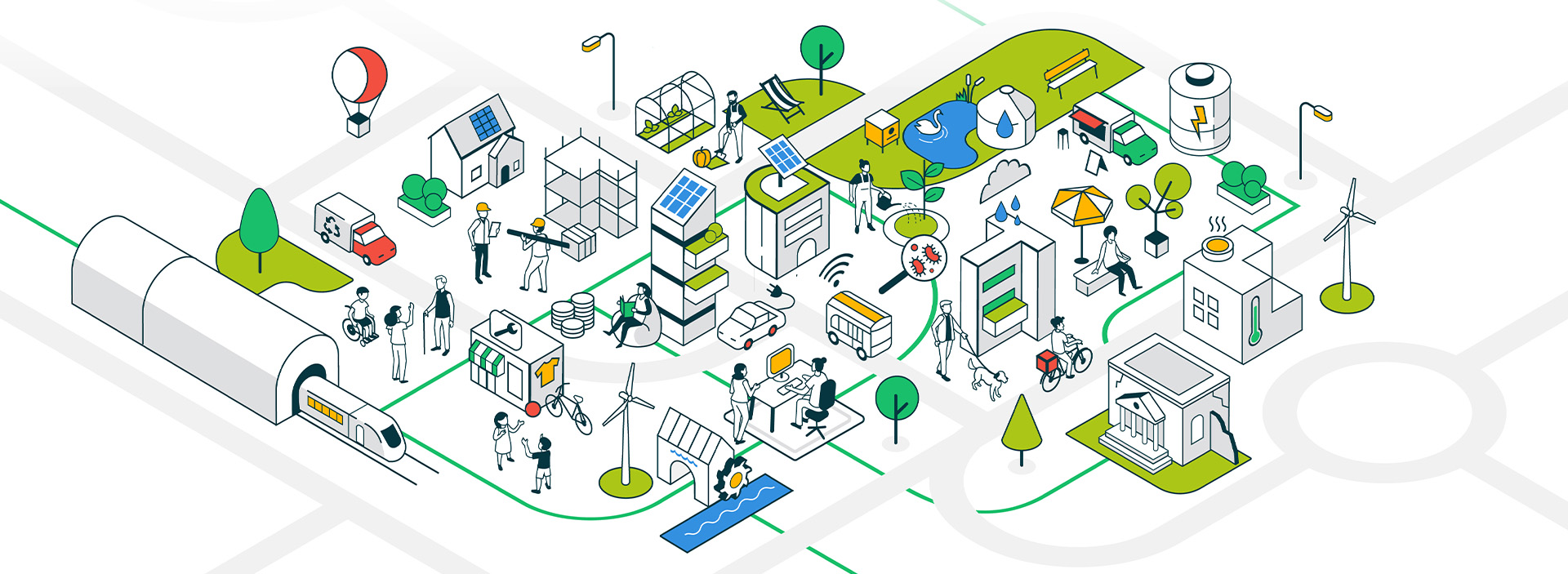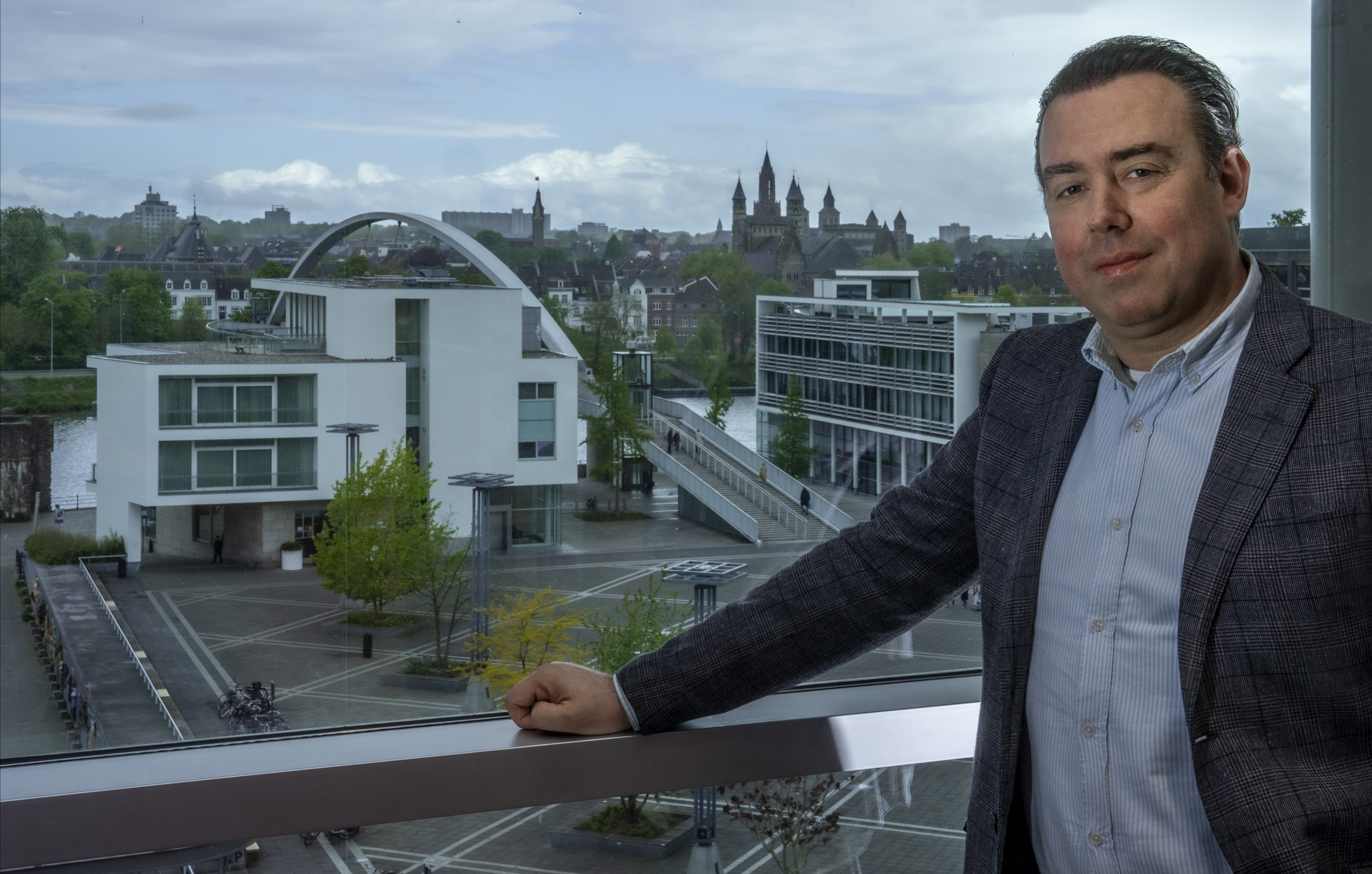Why Limburg needs international graduates
The number of young adults in South Limburg continues to decline. The resulting labour shortages could lead to companies abandoning the region. UM’s international student population can offer a lifeline – if they can be convinced to stay and work here. Inge Hooijen and Julia Reinold on demographic trends, the integration of higher education in the regional economy and feeling welcome.
Maastricht University (UM) is the Netherlands’ most international university, drawing half of its student body from abroad. Rather than a nice lifestyle bonus, this is crucial for the region. South Limburg’s population is shrinking – the total number that is, not the individual Limburgers, who continue to stand tall and proud. The birth rate is much lower than the mortality rate, causing the region to lose 26,000 inhabitants in the last 16 years. Had it not been for the slightly positive net effect of migration, negative growth would have been higher.
According to Inge Hooijen, researcher and consultant on demographic and socio-economic regional issues, around 40,000 people moved to South Limburg in 2021, a quarter of whom immigrants, while around 36,000 left the region. However, there is a negative birth surplus in South Limburg. Mortality rates are much higher than the number of children born alive. In 2021, more than 8,000 residents died and less than 4,700 children were born in South Limburg. Negative population growth leads to a problematic shift in demographic composition. “There are many more people aged 65 and over than there are 15 to 30-year-olds. Most of those moving away, for example to the Randstad [region containing the Netherlands’ four biggest cities] for example, are young people, so that results in a labour force shortage.”
South Limburg had more than 6,000 online vacancies in May 2023. “Most of them are in the technical sector, like engineers, but also the healthcare, education and research sectors are struggling to find applicants with the qualifications to match the fast-changing demands of those positions.” To maintain a flourishing regional knowledge ecosystem, collaboration between the regional government, industry and higher education, as is the case in the Brightlands campuses, is crucial.

Julia Reinold is a postdoctoral researcher at Studio Europa Maastricht and a member of the Maastricht Centre for Citizenship, Migration and Development (MACIMIDE). For her PhD with United Nations University – Maastricht Economic and Social Research Institute on Innovation and Technology (UNU-MERIT) and Maastricht University’s Institute for Transnational and Euregional cross-border cooperation and Mobility (ITEM), she examined the motivations of highly educated migrants to move to and remain in the Euregio Meuse-Rhine. Reinold defended her PhD titled “Essays on Attracting and Retaining Highly Educated Migrants” on 5 October 2023.
Running on migration
UM is doing a sterling job attracting young talent to the region. While politically sensitive, international students are overwhelmingly positive in economic terms. According to the Dutch organisation for internationalisation in education (Nuffic), the inflow of international students in 2021-22 will generate around €1.5 billion for the Dutch treasury.
Higher education funding is partly linked to student numbers, so the viability of UM as an employer depends on them. “Losing the international students would have a devastating impact on the liveability of the region,” says Hooijen. The increased revenue from students’ spending sustains a variety of gastronomy and entertainment venues, their presence makes Maastricht more attractive to highly skilled migrants, and they provide additional low-wage labour during their studies.
However, many still see Maastricht as a place to study and nothing more. While around a quarter of UM’s international students still live in the Netherlands five years after graduation, they mostly work in the Randstad and Eindhoven. “A 2017 ROA study shows that a fifth of all UM alumni work in the Meuse–Rhine Euroregion (EMR) five years after graduation,” says migration researcher Julia Reinold. “An earlier study showed that half of the international graduates returned to the country where they lived prior to studying at UM.”
“That way you miss out on highly qualified labour and the impact they have on innovation systems through bringing new ideas and different perspectives.” Reinold interviews small and medium-sized enterprises (SMEs) in Limburg and other parts of the Netherlands to understand labour market demands. “Qualifications and skills being equal, companies basically prefer local people – because of the language, but also for cultural reasons. If that doesn’t work, and often it doesn’t, then they look across the border, primarily the Flemish part, again because of the language but also because people might not have to move or move far in any case.”
Losing the international students would have a devastating impact on the liveability of the region.
Keeping the international talent pool
Only once that fails, do companies look further afield. Salaries in South Limburg might be less competitive than in the Randstad but are still excellent compared to e.g. Southern Europe. Hiring highly skilled migrants, often through expensive head-hunters, comes with its own complications though. According to Reinold, international UM graduates are considered more desirable employees since they have already familiarised themselves with the region, have built a social network and know how things work and what to expect – all factors that make them more likely to stay with an employer.
“We’ve found in our previous studies that offering students internships makes it much more likely that they stay,” Reinold says. “In general, students should be informed of the possibilities of working in the region relatively early on, so before they’ve made plans for the future,” adds Hooijen. “A positive view of the labour market makes it more likely that they’ll stay. Many of them assume that there are few career perspectives in this part of the Netherlands.” Her preliminary research with the Research Centre Global Minds @Work and the Research Centre for Employability at Zuyd University of Applied Sciences suggests the main reasons graduates would not want to work in the EMR are the perception that there are better career possibilities elsewhere or because their partner has found work elsewhere.
Perception and general reputation, i.e. how desirable a place is considered, also plays an important role in recruitment. In general, SMEs in peripheral regions struggle to attract talent. “Companies in Limburg find it very hard to attract people from the Randstad because people often think it’s the end of the world and that there’s nothing to do here. Foreign graduates have a much more positive attitude towards the region." While Dutch people might conceive of Maastricht as at the very end of the Netherlands, immigrants might look beyond national borders and see it as situated between Cologne, Brussels, Antwerp and Luxembourg.
Connected
However, not exploiting its unique position enough due to a lack of European integration is one of the things holding South Limburg back. “Public transport is often perceived as a problem among highly skilled internationals.” The EMR counts close to four million inhabitants and yet, for those living in Maastricht, an evening out in Liège, Hasselt or Aachen remains impossible without a car. “This is a big impediment, also for cross-border workers. Companies need to get creative to attract those.”

Inge Hooijen is the founder and director of Regional Capital, an independent research and consultancy company in the field of demographic and socio-economic regional issues. She earned her PhD from UM’s Research Centre for Education and the Labour Market (ROA) and won the prestigious Kremers Award for the best dissertation on socio-economic restructuring. She is also an independent researcher at the Research Centre for Employability at Zuyd University and Research Manager Brede Welvaart Limburg at the Socio-Economic Knowledge Centre Neimed.
Another resource the region could lean into more are its people. “Making people feel welcome is really important,” Reinold explains. “That means not just events for internationals but ways of connecting them to the local population, of bringing together people of all age groups.” She suggests that offering easy access to Dutch courses might also make a difference. “Familiarity with the language was also a factor, probably because of the impact on your social life.”
Having a well-integrated and happy international community makes it a lot easier to attract other internationals – and we’re not just talking about graduates, Reinold explains. “To be highly qualified doesn’t necessarily mean you have a university degree.” She also warns that skilled migrants aren’t a homogenous group and that different municipalities face different situations, so there are no one-size-fits-all solutions.
“Internationalisation and European integration has the potential to enhance economic development,” Hooijen says. “Our thriving medical technology sector in Parkstad Limburg is a good example for that. But there are labour shortages and we need migrants, particularly young migrants, to maintain our level of prosperity and guarantee healthcare for our aging population.” She thinks that with the right policies the region will succeed. “We have an amazing quality of life here.”
Text: Florian Raith
Companies in Limburg find it very hard to attract people from the Randstad because people often think it’s the end of the world and that there’s nothing to do here. Foreign graduates have a much more positive attitude towards the region.
Also read
-
Maastricht Sustainability Institute (MSI) of Maastricht University School of Business and Economics (SBE) has successfully applied for funding in the ‘Driving Urban Transitions’ program of NWO/ JPI Urban Europe. Three new transdisciplinary projects with international partners have recently started...
-
What does it mean to live and work in a city with an international university? When do you notice the university, and how does it benefit you? We asked Maastricht native Stefan Vrancken (50), who works as an associate notary. In his spare time, Vrancken is also an amateur historian and genealogist...
-
Alisa moved from Moscow to the Netherlands at 17 years old to become a first-year Regenerative Medicine and Technology (RMT) bachelor’s student. Turns out Alisa’s adventurous spirit pushes her to brand-new things, such as the RMT bachelor’s programme and her hobby Tribal Fusion dancing.


